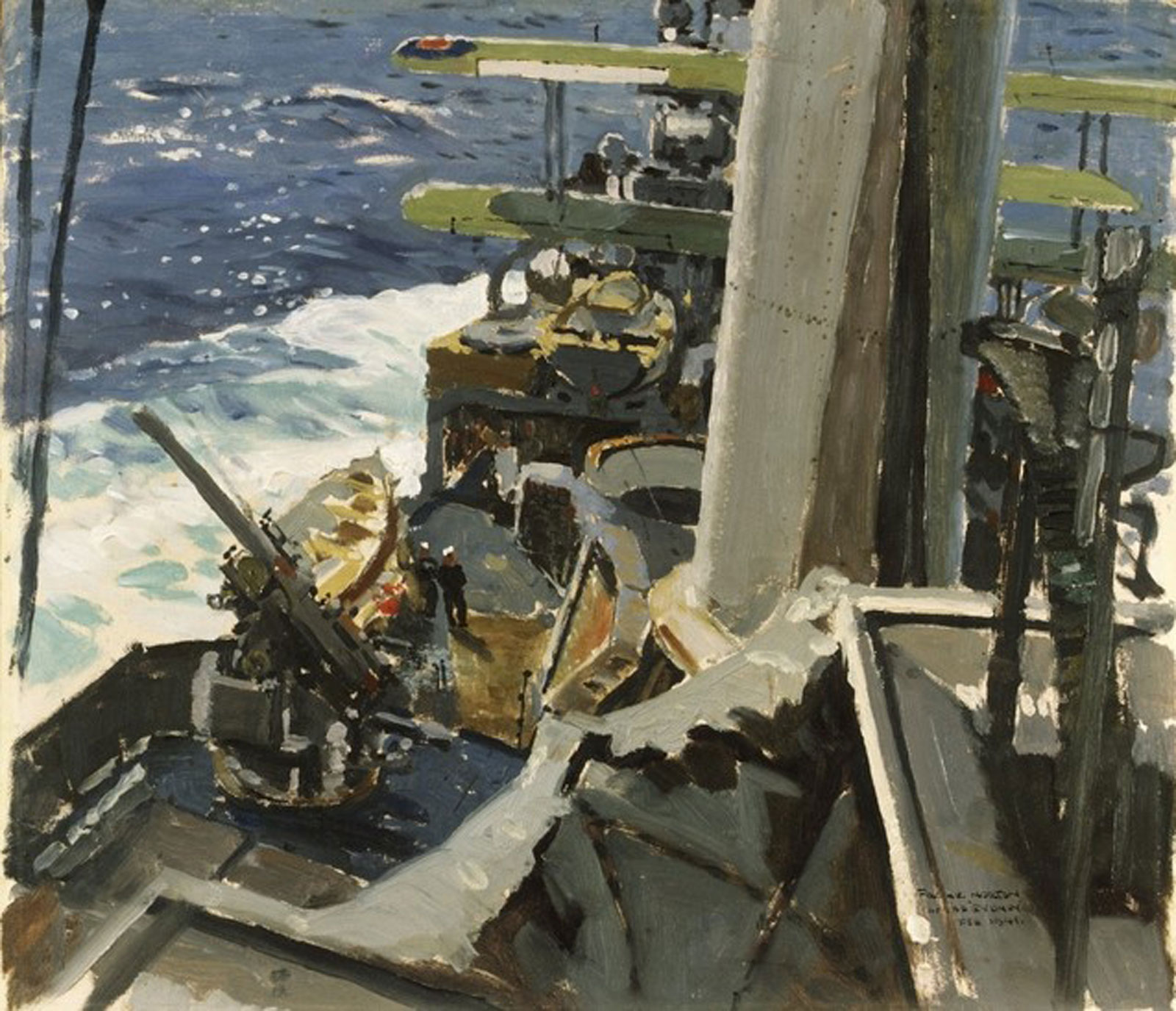Camouflage, HMAS Sydney

The war time upper deck of a hard worked cruiser presents a very different scene to the same deck in peace time. Splinter mats, carlie floats and above all, dull grey paint have bought about the change. Anti-aircraft guns are always “turned out”. All brass fittings are covered with paint, exposed portions of the upper deck are painted blue, funnels patches of colour, the once silver aircraft now several colours – all with the one object of making it difficult for enemy eyes to distinguish the ship and to confuse them as the exact location.
- About Frank Norton
Frank was born in New Zealand but moved with his family to Sydney in 1917. From a young age Frank showed he was a gifted artist and went to study painting at the East Sydney Technical College from 1931 and worked on 'sixty milers', the coal ships running between Sydney and Newcastle.
Whilst studying, he observed and sketched the Royal Australian Navy (RAN) ships at Garden Island and upon graduating in 1936 he earned a scholarship to join and document naval ships travelling between New Zealand, Singapore, Indonesia and Western Australia. After graduation, Norton also produced work for P&O and E&A Lines, travelling to Japan and China, before arriving in England in April 1939.
With the outbreak of World War II in September 1939, Frank was unable to find work as an artist and returned to Australia in 1940. The following year Frank joined the RAN and was appointed by the Australian War Memorial (AWM) as an official war artist. In this capacity he documented RAN, and occasionally RAAF, operations in the Mediterranean and the Pacific. The collection, held by the AWM, highlights his strength in draughtsmanship and his ability for the faithful depiction of ships even during intense fighting.
At the end of the war, Frank was employed at the National Art School for the Commonwealth Reconstruction Training Scheme for ex-servicemen. Frank received leave in 1952 when he was once again appointed an official war artist to document the RAN during the Korean War (1950-1953).
After the war he resumed work at the East Sydney Technical College until 1958. He then became director of the Art Gallery of Western Australia between 1958 and 1976. As Director of the Art Gallery of Western Australia he concentrated mainly on building up the contemporary, Indigenous and sculpture collections.
He continued to sketch and paint the maritime subjects he knew so well throughout his later years and died in 1983.
- About HMAS Sydney (ll)Sailors at work
Since entering World War 1 in 1914 with 16 ships, two submarines and 3800 RAN personnel (including 850 from the Royal Navy) the number of serving personnel in the Royal Australian Navy has fluctuated depending on the strategic and shifting financial environment. Over more than a century, the RAN’s and people have seen action in every ocean of the world.
Of the tens of thousands who have served, 2658 members have made the ultimate sacrifice defending Australia’s interests in warlike and peacetime operations across the globe.
Fortunately, for the vast majority who served in periods of peace or survived periods of hostilities the experience was positive.
In addition to their service in a particular category which involved specific duties, they also participated in communal duties such as coaling ship. Thus, the artworks included in this section relate to a mix of specialist and communal activities.
More reading
- Additional resources for Frank Norton
- Additional resources for HMAS Sydney (ll)Sailors at work



